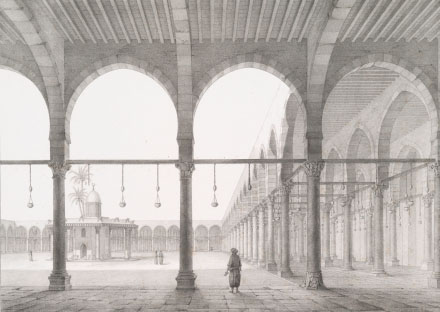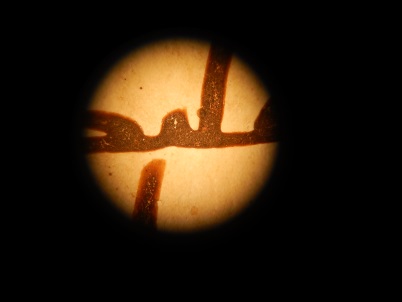It is not possible to say with certainty where the manuscript was made. The manuscript was written in Ḥijāzi script, which derives its name from the region where it developed. The particular slanting style of this script is also known as māʾil, meaning ‘sloping’.
Through detailed comparison of the characteristics of the handwriting and parchment, it is proposed that the Bibliothèque nationale de France in Paris holds a further 16 pages from the same Qur’an manuscript, catalogued as BnF Arabe 328c. That section has a provenance linked to the Mosque of 'Amr ibn al-'As in Fusṭāṭ, the ancient Islamic capital of Egypt. Built in 642 as the first mosque in Egypt, it is now part of Old Cairo. The whereabouts of the remainder of this manuscript is unknown.
Lithograph print of the Mosque of Amr ibn al-As at Old Cairo, Egypt

The Arabic script photographed through a microscope
